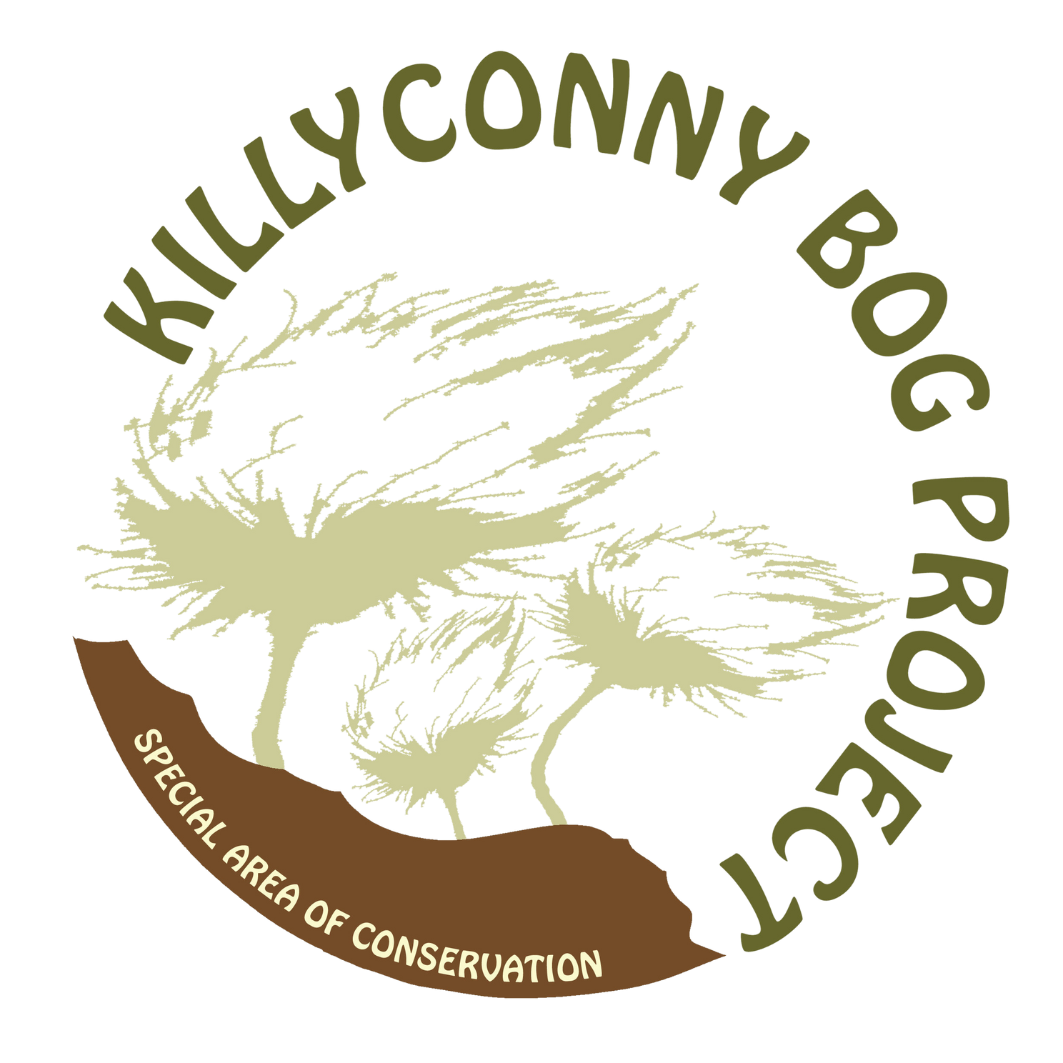
Protecting natural habitats from extinction.
Killyconny Bog
Killyconny Bog is situated on the borders of Meath and Cavan and contains approx. 191 hectares of raised bog.
Killyconny Bog was the first bog in Ireland to be classified as a Special Area of Conservation (SAC) in 1997. The National Park and Wildlife service (NPWS) then identified 11 other peatland sites around the country suitable for conservation. This group of 12 boglands became known as the Living Bogs. They are classed as 'living' because they have significant active areas where peat, mosses and other plants are growing the bog. A fund of €5.4 million was secured to restore these 12 SAC sites. The funding is being used to re-wet the bogs, to protect and restore the natural environment and to create public awareness of the importance of preserving our bogs in the interest of climate change, bio-diversity and humanity. Bogs sequester huge amounts of Carbon so it is really important that this is locked-in. This is achieved when the bog remains wet.
According to the Living Bog Program, much of the formerly active area of Killyconny bog has been lost due to water level loss & draining. The NPWS carried out re-wetting works on the bog in 2021. It is hoped that this will lead to a higher water table being retained in the bog - leading to further growth of active living areas.
Killyconny is a vast treeless landscape, with small peatland plant species. Most of the action occurs at ground level or underneath the surface. Many important plant species grow together in the peatland ecosystem such as sphagnum mosses and lichens, heathers, grasses, sedges and rare aquatic plants. These support a web of wildlife found only on peatlands. If the peatlands disappear then all other species in this ecosystem web will also disappear. This includes the rare plants, the flying insects and aquatic insects, the birds and mammals, the amphibians and pond life. The Killyconny Bog Project Group was founded in 2020 and is made up of 11 dedicated volunteers whose purpose is protect and restore the bog, to maximise its amenity value, to raise awareness of it's importance as well as share the history of times gone by.
The decision to preserve the Killyconny bog in 1997 was a momentous one, the classification of this Bog as an SAC lay the foundation stone for future proofing our bogs, not only in Ireland but also throughout the rest of the world.
Changing the world is possible. We’ve done it before.
Killyconny Bog is situated on the boarders of Meath and Cavan and contains approx. 191 hectares of raised bog.
OUR MISSION/ VISION
Our aim with the Killyconny Bog Project is to create an environment where all people can enjoy the benefits which a resource like this can offer. We want to become a model community group which facilitates everyone to enjoy the opportunities to wellbeing which the bog offers by providing an inclusive and accessible setting that will enhance people’s wellbeing.
Our vision is to connect people to the natural environment with the aim of enhancing wellbeing and raising people’s self-esteem. We want to alleviate feelings of isolation which some population groups may experience and also help to support individuals who may be experiencing mental health difficulties and different forms of anxiety. We want to try and achieve or vision while protecting and maintaining the ecosystems and wildlife which the bog is home to.
Flora & Fauna
Over 90% of the bog is water and much of the rest is like a very big, slowly rotting sponge. Underneath and at the surface consists of simple plants which have no flowers or roots – the Sphagnum mosses.
Animals are present in great variety in Killyconny. Most obvious are the birds of which 43 species were recorded in a Birdwatch Ireland Survey during 2021.

“The decision to preserve the Killyconny bog in 1997 was a momentous one, the classification of this Bog as an SAC lay the foundation stone for future proofing our bogs, not only in Ireland but also throughout the rest of the world.”
Let’s meet up in real life to share in the beauty of the natural world.
If you would like to be kept informed of research and our upcoming events please sign up for our updates using the form below:



